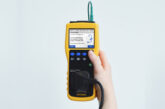
Safe isolation procedures are necessary to ensure that workers on-site are not exposed to danger when working on or near live electrical systems, as Martindale Electric’s Managing Director, Steve Dunning, explains.
Unfortunately, there have been incidents where failure to use safe isolation procedures has resulted in the needless loss of life. Electrical Safety First, in association with other industry bodies such as SELECT, produced a guidance document that covers best practice for safe isolation (Best Practice Guide 2 Issue 3, 2015). This includes guidance on proving isolated equipment or circuits are dead using suitable test lamps and voltage detectors.
Using the right equipment is one of the most important parts of the procedure, as failure to do so can result in a circuit inadvertently remaining live, resulting in injury or death.
What equipment is required for safe isolation?
Best Practice Guide 2 advises that, where using a main switch or distribution board switch disconnector for isolation purposes;
“The point of isolation should be locked off using a unique key or combination retained by the person carrying out the work or the appointed person, and a caution notice attached to the point of isolation. Where more than one operative is working on circuits supplied from an isolated distribution board, a multi-lock hasp can be used to prevent operation….”
Locking off kits are available to ensure you have all the necessary equipment to lock out the circuit being worked on at hand. There are a number of locking off kits available on the market, however, a basic kit should include the following:
● Selection of MCB and breaker locks,
● Padlock with a unique key or combination,
● Hasp for when more than one person is working on a system,
● Lock out tags and warning labels.
Note that the padlock must have a unique key or combination held by the person carrying out the work to prevent anyone else from removing the lock and inadvertently activating the circuit. Most combination padlocks have a default setting of zeroes. If this type of lock is being used, it’s essential to ensure the combination has been changed prior to use.
A unique key lock provides the safest solution. Once the breaker has been locked off correctly, a warning tag should be attached to clearly identify that the circuit has been locked off and is currently being worked on.
Locking off the circuit is just one part of the procedure. Next, verifying that the circuit is dead before carrying out any work is essential. Circuits are frequently mislabelled so there is no certainty that the correct circuit is locked off. You should use a dedicated voltage indicator and a proving unit to do this.
The guidance makes several points in regard to the use of voltage indicators to prove dead, some of the key ones are:
“Following isolation of equipment or circuits and before starting work it should be proved that the parts to work on, and those nearby, are dead. It should never be assumed that equipment is dead because a particular isolation device has been placed in the OFF position.”
So, it is not enough to simply lock off the breaker and assume that the circuit is now dead. There are recorded instances where neutrals are “borrowed” and while this is not permitted in BS 7671:2018 Requirements for Electrical Installations, it is not uncommon. In this instance, although a particular circuit may be locked off, the neutral conductor can become live if an energised load on another circuit is connected to it.
ALIVE: 5 fail-proof steps to safe isolation
APPROVED KIT
Your equipment should meet all legal safety standards (BS EN 61243-3) and you should check this before you begin work.
LOCK OUT
Identify the point of isolation and lock it off. Remember to place warning tags on the equipment.
INITIAL PROVE
Test your Voltage Indicator against the proving unit to make sure it’s working properly.
VOLTAGE TEST
Use your Voltage Indicator to confirm there are no dangerous voltages in the circuit you are about to work on.
ENSURE
Finally, prove and re-test the Voltage Indicator against the proving unit to ensure it’s still working. When this is done, you are ready to start working on the circuit with confidence.
What is the correct equipment for proving dead?
Best Practice Guide 2 advises that you should use a dedicated voltage indicator and a proving unit when carrying out this procedure. Equipment must comply with BS EN61243 which, since May 2013, prohibits the use of fuses in two pole voltage indicators.
The list of suitable equipment includes test lamps, such as the Drummond MTL10 or MTL20, or a two-pole voltage indicator, such as the Martindale VI13800 or VI-15000 which include a high wattage resistor in the probe to limit the current in the event of damage to the cable.
It is important to note that the voltage indicator MUST be able to work without the need for a battery. If you’re using a device that needs a battery in order to work and the battery is flat, you will not be able to prove if the circuit is dead!
The procedure for proving dead is to take the voltage indicator and check it against a known source, such as a proving unit, then test the circuit, before testing the voltage indicator against the known source again to prove the tester hasn’t failed during testing.
Whilst you can use a known live source to test your voltage indicator, we recommend using a dedicated proving unit. The reason for this is that the known live source will only light some of the LEDs on the tester, whereas a proving unit will ensure that all LEDs on all ranges are working, again safeguarding against incorrect readings due to a faulty LED. In addition, there’s not always a live source nearby and a dedicated proving unit is safer.
Why can’t I use a multimeter or non-contact voltage detector to prove dead?
Firstly, the use of multimeters or non-contact voltage detectors is advised against in the HSE guidance and the use of these has resulted in accidents in the past. The reason that a multimeter isn’t suitable is that it is all too easy to select the wrong range. In addition, the multimeter relies on battery power to function, thus there is a high risk of making a false “dead” reading on a live circuit.
Non-contact voltage detectors also require a battery in order to work and are often sensitive to other signals, such as static electricity. It’s also not possible to prove they are working correctly with a standard proving unit. Whilst these units can be used to detect live cables, they can’t reliably be used to prove dead.
To get more guidance on safe isolation and electrical test equipment, click here









